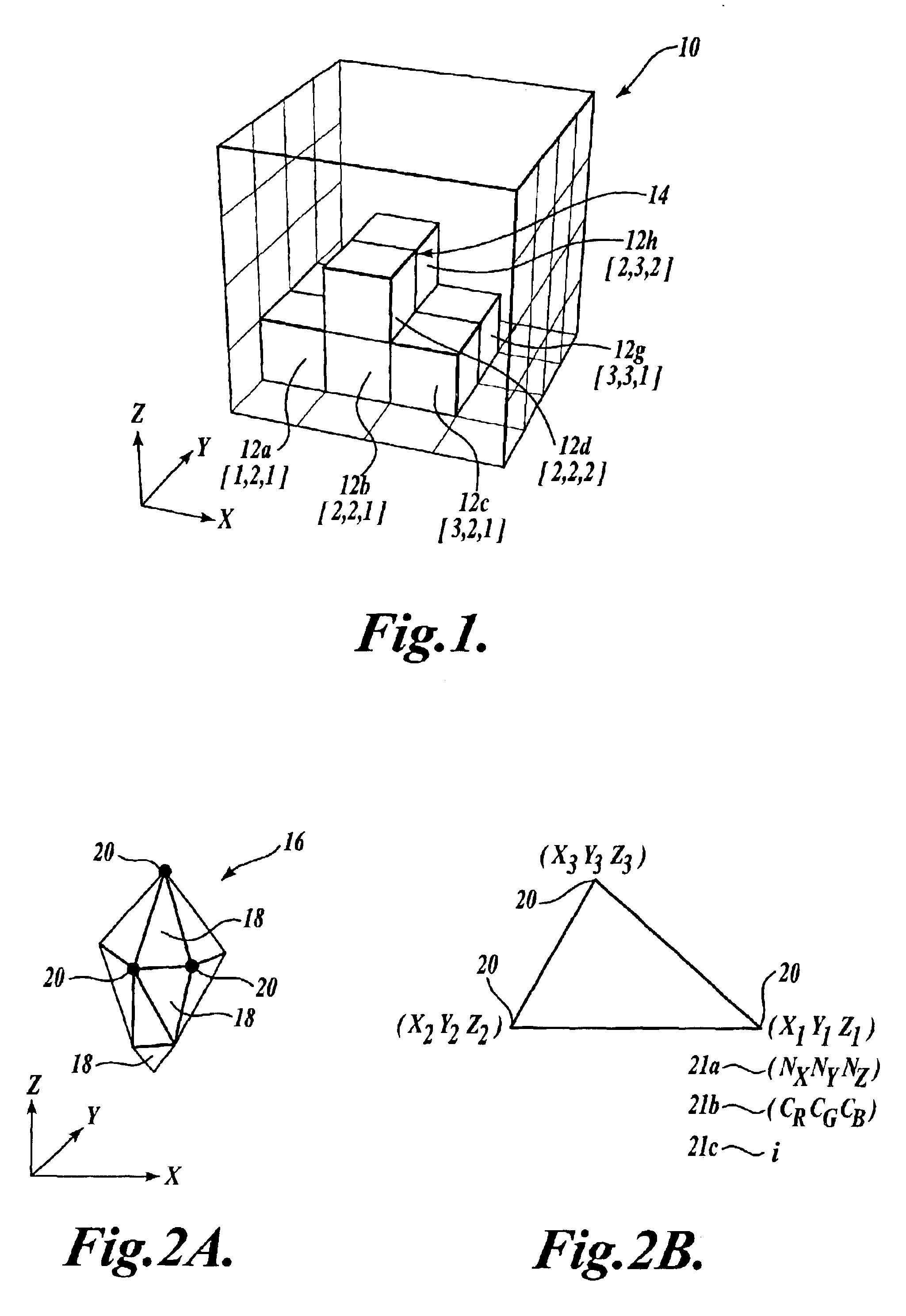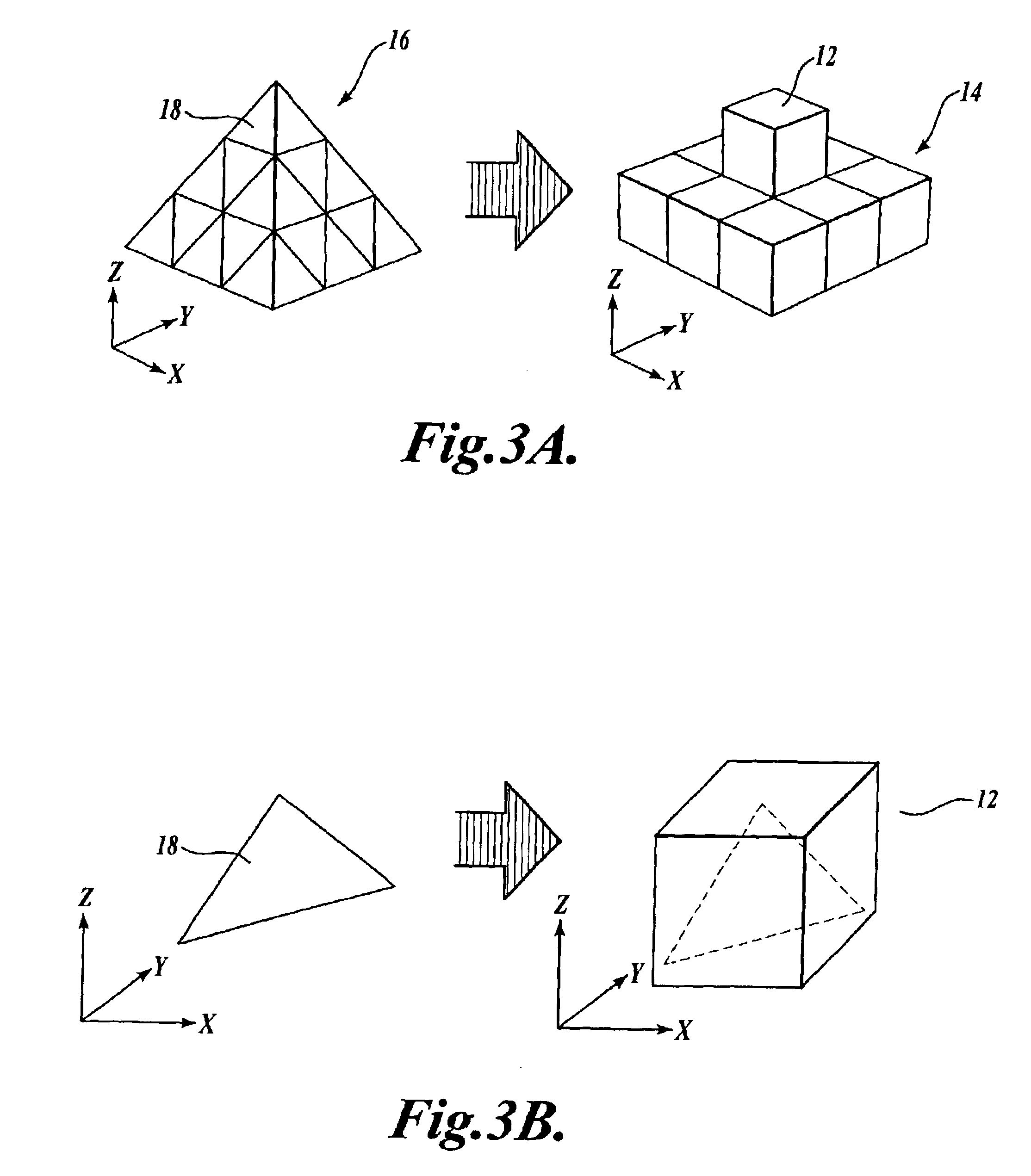Method and apparatus for transforming polygon data to voxel data for general purpose applications
a technology of polygon mesh data and general purpose applications, applied in the field of three-dimensional (3d) computer graphics, can solve the problems of computational intensiveness, inability to process polygon mesh data in their present form, and achieve the effect of efficient transformation
- Summary
- Abstract
- Description
- Claims
- Application Information
AI Technical Summary
Benefits of technology
Problems solved by technology
Method used
Image
Examples
Embodiment Construction
As will be appreciated by those skilled in the art, all of the methods described hereinbelow may be readily used to convert any surface-based graphics (higher order surfaces), not limited to polygon-based graphics, into voxel graphics. Therefore, although the following describes the conversion of polygon-based 3D data to voxels, it should be understood that the methods of the present invention may be used to convert other types of surface-based graphics, such as b-spline surface data (e.g., NURBS), into voxel data. Further, some of the methods are applicable in converting any 3D geometric representations into voxel data, as will be elaborated below.
Sampling Method
FIG. 3A schematically illustrates the conversion of a polygon-based 3D object 16 formed of polygons 18 into a voxel-based object 14 formed of voxels 12. To this end, each polygon 18 is converted into one or more voxels. As illustrated, both a polygon-based 3D object and a voxel-based object are defined in their respective C...
PUM
 Login to View More
Login to View More Abstract
Description
Claims
Application Information
 Login to View More
Login to View More - R&D
- Intellectual Property
- Life Sciences
- Materials
- Tech Scout
- Unparalleled Data Quality
- Higher Quality Content
- 60% Fewer Hallucinations
Browse by: Latest US Patents, China's latest patents, Technical Efficacy Thesaurus, Application Domain, Technology Topic, Popular Technical Reports.
© 2025 PatSnap. All rights reserved.Legal|Privacy policy|Modern Slavery Act Transparency Statement|Sitemap|About US| Contact US: help@patsnap.com



